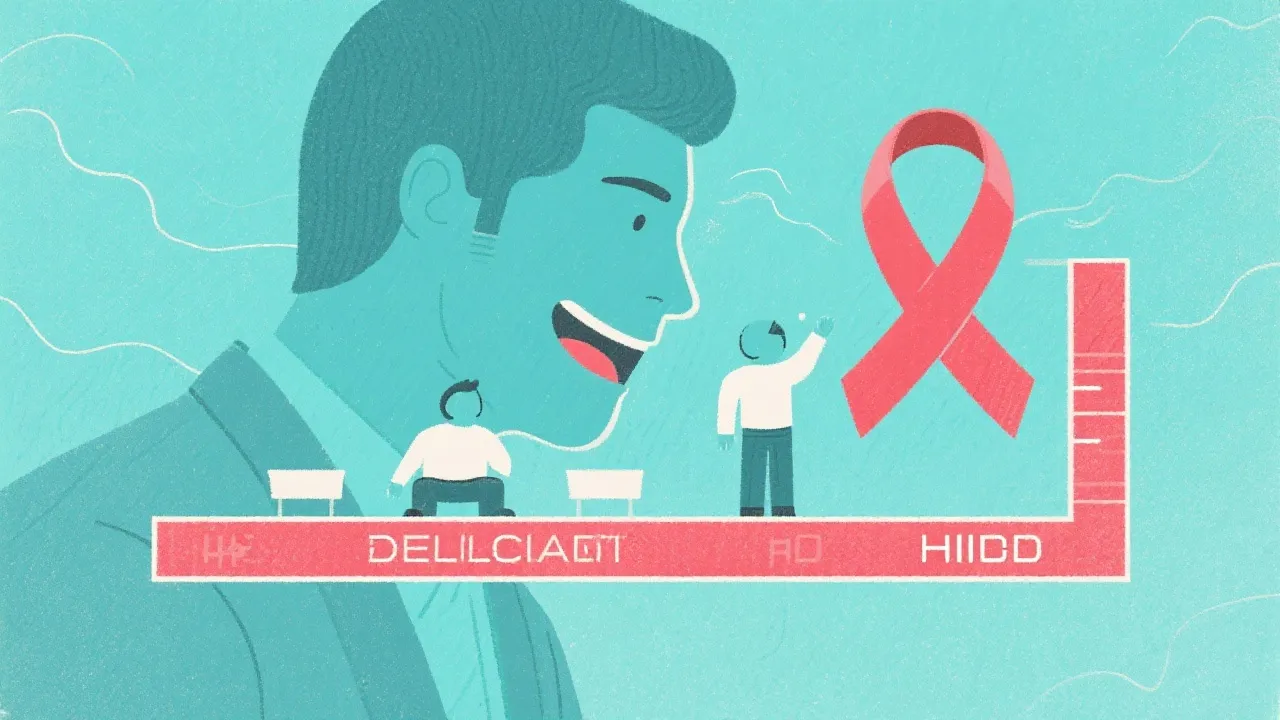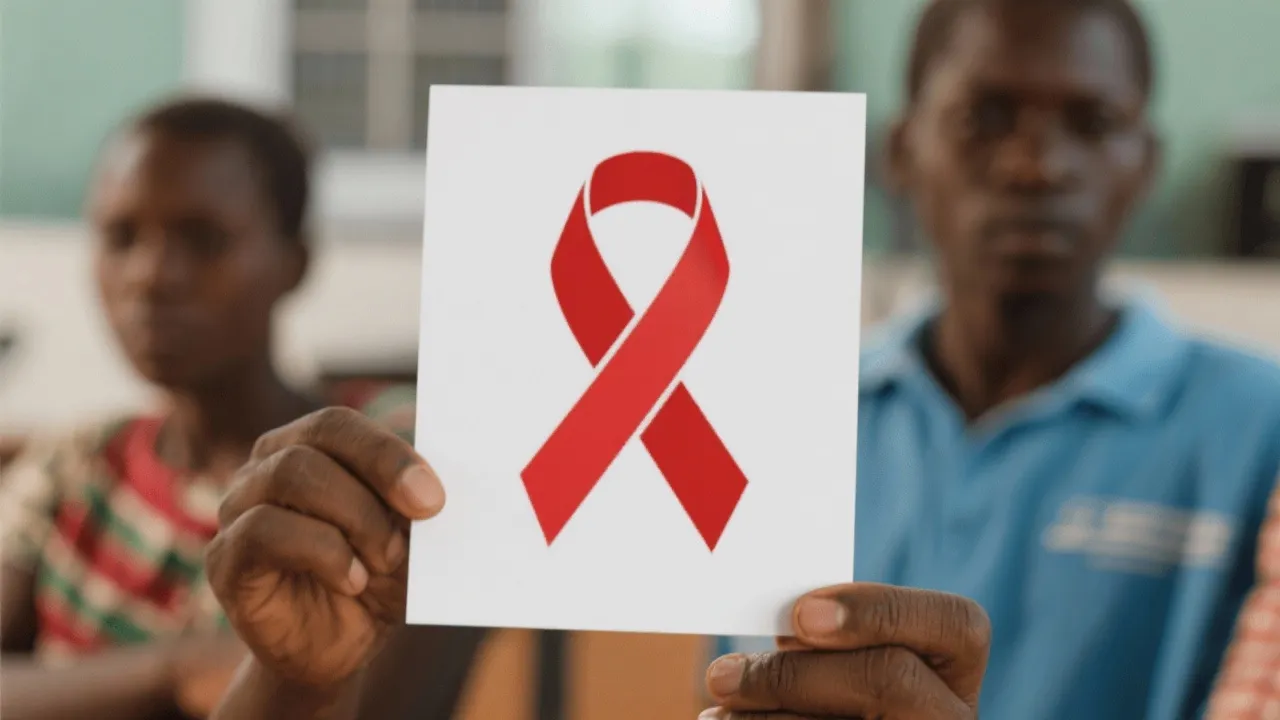Understanding HIV Decline Trends
The global trend in HIV prevalence has shown a marked decline, reflecting advancements in medical research, prevention strategies, and public health policies. This article examines the reasons behind this decline, offering an expert's perspective on the progress made in combating HIV and the challenges that remain.

Introduction to HIV Decline
In recent years, the fight against HIV has reached a pivotal point with significant global progress evidenced by a decline in new cases. This trend exemplifies the successful amalgamation of innovative medical interventions, rigorous prevention strategies, and effective public health campaigns. According to data from the World Health Organization (WHO), the global number of new HIV infections has dropped by a remarkable percentage over the last decade, showcasing the critical strides made in treatment and prevention because of communal efforts and supportive policies. Despite these advances, continuous efforts and strategic measures are essential to sustain this decrease and address persistent challenges that threaten to undermine this progress.
Reasons Behind the Decline
The decline of HIV infections can be attributed to various factors that have collectively contributed to shaping a more hopeful future in the global health landscape. These factors range from medical advancements to changes in societal attitudes about the disease.
- Advanced Antiretroviral Therapy (ART): The introduction and widespread accessibility of antiretroviral therapy have significantly reduced HIV transmission rates and increased the life expectancy of those living with the virus by suppressing viral load. ART can reduce an HIV-positive individual’s viral load to undetectable levels, effectively preventing sexual transmission of the virus, a concept famously known as "U=U" (Undetectable = Untransmittable).
- Public Health Campaigns: Extensive public health initiatives have raised awareness about HIV prevention, emphasizing safe practices, early testing, and the benefits of regular medical check-ups. These campaigns leverage social media, community outreach, and educational programs that engage and empower individuals to take charge of their sexual health.
- Preventive Measures: Preventive strategies such as pre-exposure prophylaxis (PrEP) and post-exposure prophylaxis (PEP) have become more prevalent, offering effective measures for at-risk populations to prevent transmission. PrEP, in particular, has been a game-changer in the toolkit for HIV prevention, proving highly effective when taken consistently, further contributing to the reduction of new infections.
Analyzing the Strategies: A Comparative Overview
| Strategy | Impact | Challenges |
|---|---|---|
| Antiretroviral Therapy (ART) | Lowered viral loads leading to reduced transmission and improved health outcomes for individuals living with HIV. | Access in developing countries can be uneven; adherence to treatment varies based on education, socioeconomic factors, and health system efficiency. |
| Pre-exposure Prophylaxis (PrEP) | Provides a crucial preventive measure for high-risk groups, significantly reducing the risk of acquiring HIV. | Challenges include the need for consistent awareness campaigns and ensuring equitable access to PrEP, especially in marginalized communities. |
| Public Health Campaigns | Lead to increased awareness and behavioral change regarding HIV prevention, showcasing the importance of sexual health. | One major challenge remains reaching underserved communities with tailored and effective messaging; cultural sensitivities must also be navigated. |
Current Challenges and Future Directions
While the decline in HIV cases is promising, several challenges need to be addressed to continue this trend. Disparities in healthcare access, particularly in low-income regions, pose a significant obstacle. For many individuals, barriers such as poverty, stigma, and inadequate healthcare infrastructure can hinder their ability to obtain necessary screening and treatment services. Additionally, stigma and lack of education about HIV/AIDS can hinder prevention efforts, as misinformation and fear can lead individuals to avoid testing and treatment.
To tackle these challenges, there is a pressing need for innovative outreach programs that are culturally and contextually tailored to meet the needs of diverse populations. Strategies must include educational initiatives that dismantle misconceptions about HIV/AIDS, thereby fostering an environment that encourages testing and treatment. Furthermore, mental health support for those living with HIV is essential for improving adherence to treatment and enhancing overall quality of life.
Continued research, policy-making, and community engagement are crucial in overcoming these barriers. Advocates and health professionals emphasize the importance of integrating HIV services into broader healthcare systems to ensure that individuals can receive comprehensive care that includes prevention, treatment, and mental health resources. Such integrative approaches not only address HIV specifically but also improve general health outcomes for individuals in these populations.
The Role of Technology in HIV Decline
One of the significant advancements contributing to the decline in HIV cases is the use of technology in both treatment and prevention strategies. Telemedicine has become an invaluable tool, particularly during the COVID-19 pandemic, allowing healthcare providers to connect with patients remotely. By facilitating consultations, medication refills, and adherence support sessions via virtual platforms, telemedicine has expanded access to crucial healthcare resources for individuals living with HIV.
Moreover, the use of mobile health applications has also gained traction, providing users with reminders for medication adherence, tracking health metrics, and facilitating education about HIV. These applications encourage individuals to engage in their health proactively, offering them resources and support to manage their conditions effectively. In well-developed regions, the implementation of patient portals where individuals can view their medical records and communication with healthcare providers ensures that individuals are empowered to take charge of their health.
Importance of Community Involvement
Community involvement plays a critical role in the ongoing fight against HIV. Engaging communities in discussions about HIV prevention, testing, and treatment helps destigmatize the disease and encourage individuals to seek services without fear of judgment. Grassroots organizations can cultivate relationships within their communities, ensuring that messaging is appropriate, accessible, and effective.
Programs that promote peer education, where individuals within communities are trained to educate their peers about HIV risk factors and prevention strategies, are essential. Such initiatives facilitate open dialogue and create safe spaces where individuals can ask questions and express concerns. Community-led testing initiatives can also reduce the barriers associated with traditional healthcare settings, making it more comfortable for individuals to undergo testing.
Global Perspectives on HIV Decline
The decline of HIV cases exhibits differing patterns across various regions globally. High-income countries have seen more pronounced declines, due in part to robust healthcare infrastructure, widespread access to ART, and established public health campaigns. Conversely, low and middle-income countries continue to face significant challenges, including limited resources, infrastructural deficits, and socio-economic factors that impede the provision of healthcare services.
A stark example can be observed in sub-Saharan Africa, where the HIV epidemic remains one of the most pressing public health challenges. Here, initiatives tailored to the local context are imperative. These may include comprehensive education programs that address local cultural beliefs and health practices. Furthermore, involvement from local leaders and influencers can be paramount in altering perceptions and enhancing HIV awareness within communities.
Emerging Trends in HIV Treatment
As medical research progresses, novel treatment options are emerging that promise to revolutionize the care of individuals living with HIV. The landscape is evolving with innovative therapies such as long-acting injectable antiretroviral medications that require administration only once every few months. This treatment modality ensures higher adherence rates as patients may find it more manageable compared to daily pill regimens.
Moreover, promising research into HIV vaccines and cures also brings a sense of hope. Clinical trials are ongoing to develop preventive vaccines that can provide individuals with an additional layer of protection against HIV infection, while strategies aimed at achieving long-term remission are under investigation. These advancements represent not only the scientific potential to ultimately end the HIV epidemic but also the determination to uncover holistic solutions for those affected by the virus.
Achievements in HIV Research and Development
The strides made in HIV research and development command recognition and commendation. Global partnerships, such as the Global Fund and PEPFAR (President's Emergency Plan for AIDS Relief), have facilitated substantial investments into HIV programs worldwide, leading to improved diagnostic and treatment technologies. Research has also birthed biomarker discoveries that allow healthcare professionals to better monitor the health of individuals living with HIV, offering a personalized approach to treatment.
Additionally, widespread educational campaigns have resulted in notable reductions in stigma surrounding HIV, enabling a more open dialogue about the disease. The increased visibility of HIV/AIDS within public consciousness contributes significantly to encouraging individuals to seek testing and prevention services without fear of discrimination.
The Future of HIV Decline
As we look to the future, the goal of ending the HIV epidemic by 2030 continues to propel strategies and efforts. Sustained collaboration among governments, organizations, healthcare providers, and affected communities is key to achieving this ambitious vision. Building resilience in healthcare systems worldwide, advocating for equitable healthcare access, and remaining adaptable to emerging challenges are pivotal aspects of this journey.
The integration of HIV services into broader health initiatives alongside community-driven outreach signifies progressive change. Protecting the gains made thus far through strategic investments and ongoing research will be essential in ensuring that the decline in HIV cases is not only sustained but amplified over the coming years. It will take committed action, compassionate care, and relentless advocacy to realize a world where HIV is no longer a public health threat.
FAQs
Q: What is driving the decline in HIV cases globally?
A: The decline is largely driven by the increased availability and use of ART, preventive drugs like PrEP, and comprehensive public health campaigns focused on prevention and education. Strengthening healthcare systems and community engagement also play a vital role in this progress.
Q: What challenges still exist in the fight against HIV?
A: Key challenges include healthcare disparities, stigma, and the need for ongoing education and awareness-raising efforts globally. Addressing the unique needs of marginalized communities remains a critical priority.
Q: How can individuals protect themselves from HIV?
A: Consistent use of preventive measures such as condoms, PrEP for those at high risk, and regular testing are crucial strategies for protection against HIV. Engaging in open discussions about sexual health and getting tested routinely can further mitigate risks.





